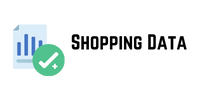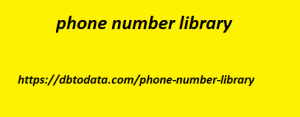What Is Click Tracking and How Does It Work. Click tracking involves tracking every time a user clicks on a specific element of a webpage or app, such as buttons, links, images, or interactive features. This tool captures valuable data about user behavior, providing insights into which elements are engaging users and which are being ignored. The data from click tracking typically includes information on click location, click frequency, timing, and sequence of actions. By tracking these clicks, you can identify user interactions in real-time and gain a clearer understanding of how users are navigating through your site or app.
Click tracking tools can create detailed heatmaps, record click-through paths, and generate clickstream data, which collectively provide a granular view of the user journey. This makes it possible to pinpoint high-performing elements and areas where users are experiencing friction, allowing for focused optimization efforts to improve user flow and conversion paths.
2. Identifying Bottlenecks in the User Journey
One of the primary benefits of click tracking is its ability to identify bottlenecks in the user journey. Bottlenecks occur when users are repeatedly clicking in an area but not progressing to the next step, which could indicate friction or confusion in the user flow. For example, if users are clicking on a call-to-action (CTA) button but not advancing to the checkout page, it suggests that the CTA may not be clear enough, the page is loading too slowly, or users are encountering obstacles before they can complete their desired action.
By using click tracking data to analyze these pain points, you can make informe decisions about how to remove friction from the process. For example, if the issue is a cluttered layout or a poorly designed CTA, you can simplify the design or reposition the button for more visibility. If users are failing to click on a CTA altogether, adjusting its size, color, or placement may improve engagement. By addressing these bottlenecks, you streamline the user journey and create a more seamless experience, ultimately improving conversions.
3. Analyzing Click Paths to Optimize Navigation
Click tracking allows you to track the exact paths users take through your website or app, showing you the sequence of pages or portugal phone number library actions leading up to a conversion—or leading to an exit. By visualizing the user’s journey from start to finish, you can identify areas where users may be getting lost, distracte or frustrate.
For example, if users click on a product page, but then abandon the site before reaching the checkout, you can analyze the previous clicks in their path to see if they were confuse by a particular page or call-to-action. By understanding the specific navigation patterns that users follow, you can optimize the structure of your website, improve internal linking, and guide users toward the most important actions. Whether it’s simplifying the navigation menu, reducing the number of steps in the checkout process, or placing prominent CTAs at strategic points, click tracking data helps you shape a user flow that encourages users to follow the most direct path to conversion.
4. Optimizing Call-to-Action (CTA) Placement
One of the most common uses of click tracking is optimizing the placement and effectiveness of calls to action (CTAs). CTAs are crucial for guiding users to webinar: a powerful tool that guarantees the success take specific actions, such as signing up, downloading an app, making a purchase, or subscribing to a newsletter. By tracking where users are clicking (or not clicking), you can determine whether your CTAs are positione effectively within the user flow.
If you find that your primary CTA button (such as a “Buy Now” or “Add to Cart” button) isn’t getting many clicks, it may be positione in a less visible part of the page, or it may be competing with other distracting elements. Click tracking data can reveal exactly where users are looking or clicking and help you reposition CTAs in more prominent spots where they’re more likely to be notice. Moreover, you can experiment with variations in CTA wording, color, size, and design to see which combinations lead to higher engagement and conversions. Continuous testing and optimization of CTAs through click tracking can significantly improve user flow and conversion rates.
5. Improving Mobile User Flow
As mobile traffic continues to increase, optimizing the mobile user flow is crucial. Mobile users interact with websites and apps in ways that differ significantly from desktop users. For example, thumb reach, screen size, and touch gestures all impact how users navigate and engage with mobile interfaces. Click tracking on mobile devices can reveal unique insights into mobile user behavior, such as whether users are clicking on elements that are too small to tap or if they’re abandoning a page due to lengthy forms or complex navigation.
6. A/B Testing and Click Tracking for Conversion Rate Optimization
Click tracking data can be use in tandem with A/B testing to refine and optimize conversion paths. A/B testing allows you to test two or more variations of a azb directory webpage or app screen, comparing how each version performs in terms of user engagement and conversions. By analyzing click tracking data alongside A/B test results, you can gain insights into which design changes drive the most user engagement and lead to higher conversion rates.

